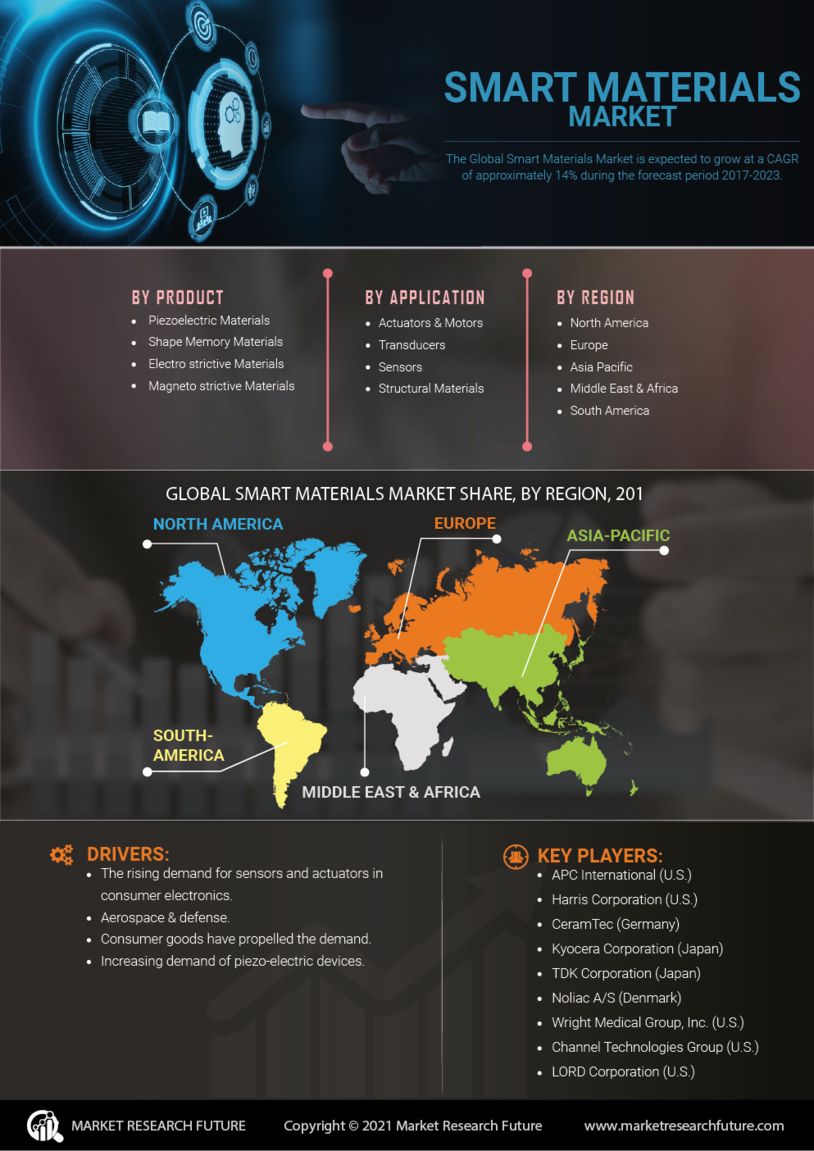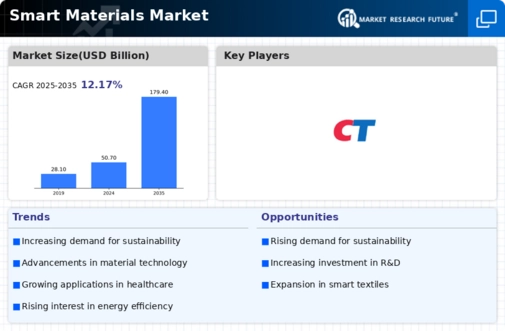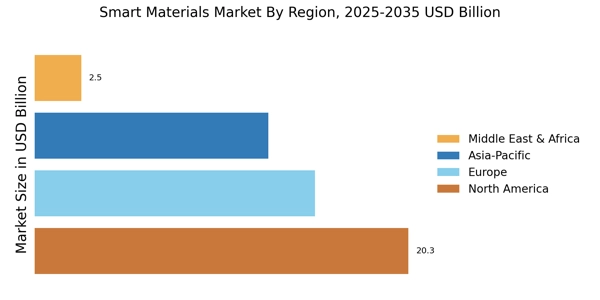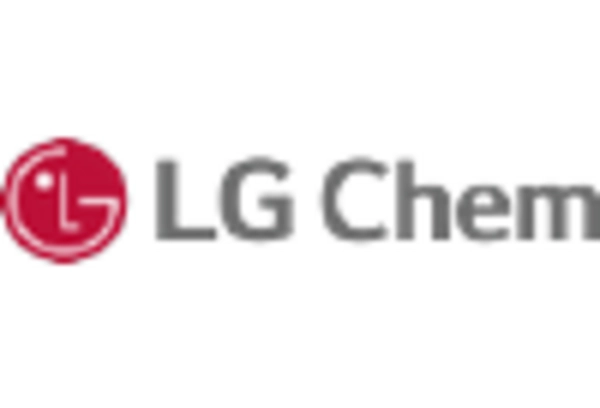Leading market players are extensively investing in research and development in order to extend their product lines, which will help the smart materials market grow even more. Market participants are also engaging in a number of strategic initiatives to grow their worldwide presence, with significant market developments including new product launches, contractual agreements, mergers and acquisitions, increased investments, and collaboration with other organizations. To expand and survive in a more competitive and expanding market climate, the smart materials industry must provide cost-effective products.
Manufacturing locally to reduce operational costs is one of the primary business strategies employed by manufacturers in the smart materials industry to serve customers and expand the market sector. In recent years, the smart materials industry has provided some of the most significant benefits to medicine. Major players in the smart materials market are TDK Corporation (Japan), Noliac A/S (Denmark), and Wright Medical Group, Inc. (U.S.). Channel Technologies Group (U.S.). LORD Corporation (U.S.) and others are attempting to improve market demand by investing in research and development operations.
TDK Corporation is a Japanese multinational electronics corporation that makes electronic components as well as recording and data storage media. Its motto is "Contribute to culture and industry through creativity." "TDK" is an abbreviation for the company's original Japanese name: Tokyo Denki Kagaku Kgy K.K. (Tokyo Electric Chemical Industry Co., Ltd.). The company is traded on the Tokyo Stock Exchange and is a component of the Nikkei 225 and TOPIX indices. On December 7, 1935, Kenzo Saito created TDK in Tokyo, Japan, to manufacture the iron-based magnetic substance ferrite, which had recently been invented by Yogoro Kato and Takeshi Takei.
They began producing magnetic tape in 1952 and 1957, respectively, with tiny cassette tapes following in 1966. In May 2022, TDK Corporation announced an investment in XCOM Labs, a wireless technology developer based in the United States, through its subsidiary Ventures, Inc. The money will be used to create 5G and wireless communications systems with an emphasis on bandwidth capacity, latency reduction, and compute load balancing.
Kyocera Corporation is a Japanese multinational ceramics and electronics firm located in Kyoto, Japan. Kazuo Inamori created Kyoto Ceramic Company, Limited in 1959, and it was renamed in 1982. It makes industrial ceramics, solar power producing systems, telecommunications equipment, office document imaging equipment, electronic components, semiconductor packages, cutting tools, and components for medical and dental implant systems. Kyocera's first product was a ceramic insulator known as a "kelcima" for use in television picture tubes. The company quickly modified its methods to produce an expanding range of ceramic components for electronic and structural applications.
In March 2022, Kyocera Corporation has finalized the acquisition of AVX Corp., a U.S.-based electronic component manufacturing company. Kyocera formerly owned about 72% of AVX's outstanding shares. Following the completion of the merger, AVX became a wholly owned subsidiary of Kyocera.


















Leave a Comment